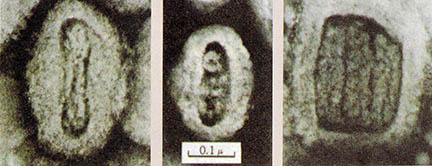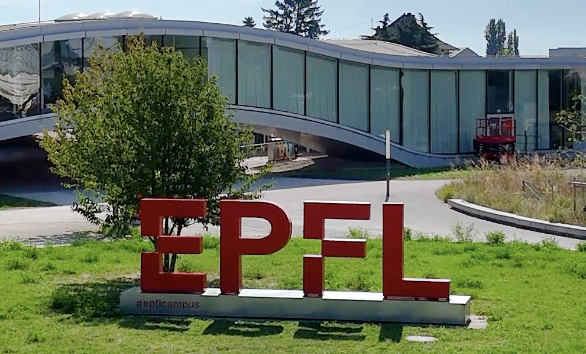척추동물의 몸체중 가장 단단한 부분은 이빨이며 당연히 이빨은 어려운 일을 맡고있다. 이것은 고대 생명체가 화석으로 변할 때 모든 지질의 변화를 견뎌내는 부분은 두개골과 이라는 뜻이며 어떨 때는 오직 이만이 남는다. 따라서 이에 관해 가능한 한 많은 정보를 입수한다는 것은 중요한 일이 된다.
이는 척추동물의 특성이며 필자가 알기로는 상어로부터 시작했다. 이는 육지에 사는 거의 모든 척추동물에서 발견할 수 있지만 모두는 아니다. 예를 들어 새들은 이빨이 없다.
그러나 새들도 처음엔 이빨이 있었다. 오래전 멸종된 시조새는 도마뱀 모양의 이빨을 가졌으나 진화되어가면서 사라지고 말았다.
새들에겐 부리가 있는데 부리는 식생활에 훨씬 효율적이다. 새는 우리 인간보다 체온이 높고 그 체온을 유지하려면 계속 먹어대야 한다. 이때 부리는 새들이 작은 씨나 곤충 등의 먹이를 쪼는데 효율적인 기능을 한다. 바다거북이나 민물거북도 이빨이 없다. 그들에게도 단단한 부리가 있는데 새들의 부리에 따라갈 수 있을 정도의 효율적인 것은 되지 못한다. 그러나 거북은 장수 동물이고 느릿느릿 삶을 살아가므로 특별히 효율성을 필요로 하지는 않는다.
초기의 포유동물은 모양이 같은 이빨을 가졌는데 그저 잘게 썰고 다지는 일련의 도끼들에 불과했다. 그러다가 진화되어가며 이빨들도 변하기 시작했고 각기 크기와 기능이 다르게 됐다. 우리 인간의 치아를 보더라도 앞니는 자르고 어금니는 갈아문지르는 이다. 많은 동물들은 음식물을 잡아당기고 찢을 수 있는 송곳니를 갖고 있다.
이는 이상하게 발전하기도 했다. 코끼리에겐 상아, 해마에겐 긴 송곳니가 있으며 일각고래에겐 나사모양의 송곳니가 하나 있다. 독사는 상대방을 쉽게 치명적인 상황으로 만들 수 있는 독을 송곳니를 통해 뿜는다. 그러나 이 모든 동물의 이중에서 인간의 치아가 가장 유용할는지 모른다.
이빨로부터 정보를 쥐어 짜낼 수만 있다면 고생물학자들에겐 큰 도움이 될 것이다. 이것은 쉽지만은 않은 일처럼 보이지만 이제 과학자들은 이 연구를 하기위해 바쁘다.
예를 들어 몬타나주 보즈만에 있는 록키 박물관의 그레고리 에릭슨은 바로 그 정보추출 문제에 골몰하고 있다. 공룡의 이를 이용하여 그는 그 이에 보이는 가는 성장선의 수를 세었다. 그리고 공룡과 가장 가까운 생존동물인 악어의 이빨도 같은 방법으로 연구하여 그 결과를 비교하였다. 그는 각 성장선이 이제는 멸종된 거대한 동물의 생애 하루씩을 의미한다고 주장했다.
물론 이와 같은 주장은 공룡의 이빨이 자라기까지 얼마만한 시간이 소요되었는가, 그리고 보다 폭넓은 질문으로 그 공룡이 얼마나 오래 살았는가에 대한 정보를 제공해 준다.
이러한 실험은 그러나 쉽게 수행될 수 있는 것은 아니다. 첫번째 문제는 악어의 이빨을 구하는 것이다. 이빨을 갖고자 악어를 죽인다는 것은 부당한 짓이다. 대신 가죽을 얻기위해 이미 살해된(필자는 개인적으로 이 행위에 대해서도 격렬히 반대하는 입장이다) 악어로부터 이빨을 빼내는 것이다. 그리고나서 이 이빨을 적절히 잡아당긴 후 그 결과를 정밀검사를 위해 현미경으로 관찰한다.
이렇게 얻어진 정보는 묵은 이가 빠지고 새 것으로 교체될 때까지 이가 얼마나 오랫동안 활용되는가를 말해준다. 억센 풀을 뜯어먹어야 하는 초식성 공룡의 경우 이는 2, 3개월밖에 견디지 못했다. 육식성 공룡은 보편적으로 더 부드러운 먹이를 섭취하는데 따라서 3년까지도 견디는 이빨을 가졌다. 이 사실을 입속에 남아 수십년간 그 기능을 발휘하는 인간의 치아와 비교해보자.(71세의 고령임에도 불구하고 필자의 치아는 치과의사의 정성스런 주의를 필요로 하긴 하지만 아직도 매우 건강하다. 물론 인간은 파충류처럼 새 치아로 교체하지는 못한다.)
아무튼 이빨로부터 얻은 정보는 나이든 공룡과 어린 공룡을 구분할 수 있도록 해준다. 그리고 출생률과 같은 사실들에 관한 정보도 제공한다. 또한 약탈동물의 수와 희생되는 동물의 수를 예측하는 데도 도움을 준다.
이 모든 것은 얼추 1억년은 됨직한 딱딱한 이빨로부터 얻게 되는 정보로서는 그리 나쁜 것은 아니다.
노스캐롤라이나주 더함시에 위치한 듀크대학의 수잔 스트레이트는 이 이빨에 관해 다른 시각에서 접근했다. 그녀는 박쥐나 영장류처럼 작은 포유동물의 이를 주로 연구했다.
그녀는 살아있는 동물 이의 에나멜이 긁힌 자국을 관찰하면서 딱정벌레나 뼈와 같은 딱딱한 먹이를 씹는 동물은 부드러운 먹이를 섭취하는 동물에 비해 다른 자국의 이빨을 가지고 있다는 사실을 밝혔다.
지금까지 밝혀낸 정보는 작은 동물의 화석 속 이빨을 연구하는데 활용되었다. 그 결과 초기의 영장류는 대부분 딱딱한 곤충을 잡아먹고 살았던 것으로 파악되었다. 이러한 연구는 인류의 진화를 설명하는데도 유용하다.
이 모든 연구들은 각기 전혀 다른 곳으로부터 얻어진 정보들이 다른 방법으로는 예상치 못했던 사실을 감쪽같이 밝혀내는 방법의 재미있는 예들이다.
The hardest part of the vertebrate body are the teeth-naturally, since they have a difficult job. This means that when ancient forms of life are fossilized, the one part that is sure to survive all the vicissitudes of geologic change are the head and teeth-sometimes only the teeth. Therefore it is important to glean as much information from them as possible.
Teeth are characteristic of vertebrates and began, I believe, with sharks. Teeth are found in most of the land vertebrates, but not all. Birds, for instance, do not have teeth.
But they had teeth to begin with. The early extinct bird archaeopteryx had lizard-like teeth, but, with evolutionary change, they disappeared.
Birds now have beaks, which, for their diets, are far more efficient. Birds have a higher temperature than we do and to maintain that high temperature, they must constantly be eating. Their beaks allow them to efficiently peck away at food such as small seeds and insects. Turtles and tortoises also lack teeth. They have horny beaks that are nowhere near as efficient as those of birds. However, turtles are long-lived and slow-living and don't require efficiency in that respect.
Early mammals have teeth that are very much alike-just a series of choppers. With evolutionary change, the teeth also developed and became different in size and function. We ourselves have incisors that are cutting teeth, and molars that are grinding teeth. Many animals have fangs that do the ripping and tearing of food.
Teeth also develop in odd ways. Elephants and walruses have tusks, and the narwhal has a single long tusk of spiral shape. Poison snakes have fangs that conduct a poison and their vites can be easily fatal. But all in all, human teeth may be the most useful of all.
It would be of great use to paleontologists if information could be squeezed out of teeth. It doesn't seem likely, but scientists are now busily engaged in trying to do just that.
For instance, Gregory M. Erickson of the Museum of the Rockies in Bozeman, Mont., is working on the problem. Using the teeth of dinosaurs, he counted the tiny lines of growth in them. He compared the results with similar investigations of the teeth of alligators, the closest living relatives of the dinosaurs. He maintained that every line of growth represents a day in the life of the large, extinct creatures.
Naturally, this yielded information about how long it took a dinosaur's teeth to develop, and more generally still, how long it lived.
This is not an easy test to perform. The first problem is to get the alligator teeth. The alligators are not killed for their teeth : that would be unconscionable. Instead, teeth are taken from alligators that have already been killed for their skins.(I'm bitterly against that, too.) The teeth are then stained appropriately and the results studied under a scanning microscope.
The information obtained in this way can tell how long teeth will last before they are shed and replaced by new teeth. Plant-eating dinosaurs, who had to rip away at the hard grasses, had teeth that lasted only two or three months. Carnivorous dinosaurs, which, in general, ate softer food, had teeth that lasted as much as three years. Compare this with human teeth that may remain in the mouth and functioning for decades. (My teeth, at 71, are, for instance, in excellent shape, although they have required the careful attention of dentists. Of course, human beings can't replace teeth as reptiles can.)
In any case, this knowledge that teeth offer can differentiate between old dinosaurs and young one. It therefore can give one an idea on such things as birth rates. It will also help in estimating the number of predators versus the number of prey.
All this is not bad for information from an old, rocky tooth that may easily be a hundred million years old.
Suzanne G.Strait of Duke University in Durham, N.C., has tackled teeth from a different angle. She has worked mainly with the teeth of small mammals such as bats and primates.
She studied the enamel scratches on teeth and, working with living animals, showed that a diet of hard objects such as beetles and bone produced scratches different from those produced by a diet of soft objects.
The information thus gained was used to study the fossilized teeth of small animals. It showed that a group of early primates lived primarily on hard insects. This sort of thing is useful in trying to work out the evolution of the human species.
These are examples of the way in which completely unlikely sources can be cajoled into yielding information that can perhaps be obtained in no other way.
(C) 1992, Los Angeles Times Syndicate
이 기사의 내용이 궁금하신가요?
기사 전문을 보시려면500(500원)이 필요합니다.
1992년 02월 과학동아 정보
🎓️ 진로 추천
- 지구과학
- 생명과학·생명공학
- 역사·고고학

















